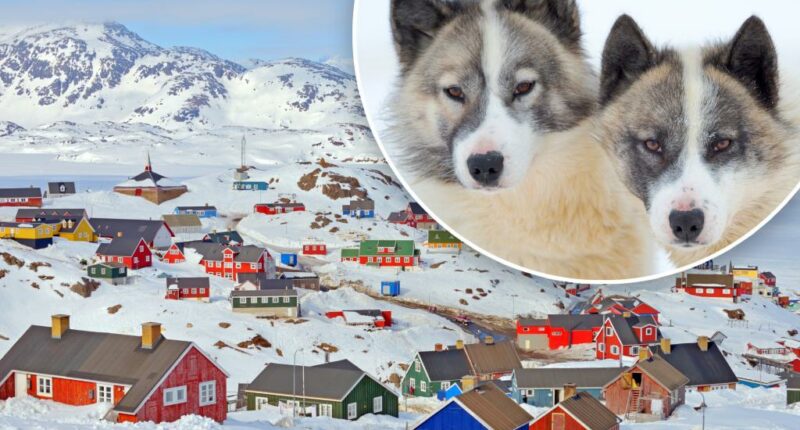Share this @internewscast.com

It gives new meaning to dog years.
For nearly 10,000 years, people in the Arctic regions have utilized different breeds of sled dogs. However, recent research identifies one breed as the longest continuously domesticated.
A study featured in the journal Science highlights that Qimmit have been maintained by Inuit societies in Greenland for nearly a thousand years, unlike other sled dog varieties which have been selectively bred out.
“These dogs have been carrying out the same duties alongside the same communities for 1,000 years or more,” Tatiana Feuerborn, the lead researcher and a paleogeneticist at the National Human Genome Research Institute part of the National Institutes of Health, shared with Popular Science. “This longstanding relationship distinguishes them from other Arctic and sled dog breeds.”
However, the population of the special animal has been steadily declining as a result of “environmental changes and cultural transitions,” according to the study.
There are even fears that Qimmit could become extinct.
In 2002, there were about 25,000 in Greenland, but that number had plummeted to just 13,000 in 2020.
The Science study delves into the genetic history of the Qimmeq.
Other dog breeds that descended from a common ancestor include the Siberian husky, Alaskan malamute, Samoyed and Canadian Inuit dog. Similarly, these canines adapted to the harsh Arctic climate, but none have remained with the same population like the Qimmeq.
The team of researchers studied 92 genomes, ranging from contemporary to ancient, to trace how far back the breed goes, and how its isolation in Greenland impacted its development, as opposed to other comparable Arctic dogs.
âWeâre not the first people to say this⦠but this is some of the first quantifiable evidence that really lends credence to it,â she added, clarifying the findings.
Older DNA samples were taken from bones and fur embedded in preserved Inuit garments, which were borrowed from museums, while contemporary saliva swabs were graciously given to researchers by modern-day Qimmeq breeders in Greenland.
Despite their lupine looks, the Qimmeq is less closely linked to wolves than previously suggested, researchers also uncovered.
“Qimmeq–wolf hybrids have been reported to form strong bonds with a single owner and often display aggression toward humans outside of their ‘family,’ killing dogs from outside their team,” the study reports. “This highly territorial behavior makes it difficult to integrate them with new owners and unfamiliar animals.”
While the study is certainly interesting food for thought for dog lovers across the world, it also provides insights into how to preserve the current Qimmit population,
In many areas of Greenland, once-expansive ice sheets have become slushy seas, and researchers have marked billions of tons of ice loss in recent years.
“Dogs have been so intrinsically tied to human history as the first domesticated animal. They have been at the formation of every human society,” Feuerborn said. “In Greenland in particular, these dogs have been there all along. Being able to preserve that cultural history alongside the genetic history is important. It has immense cultural value.â

















